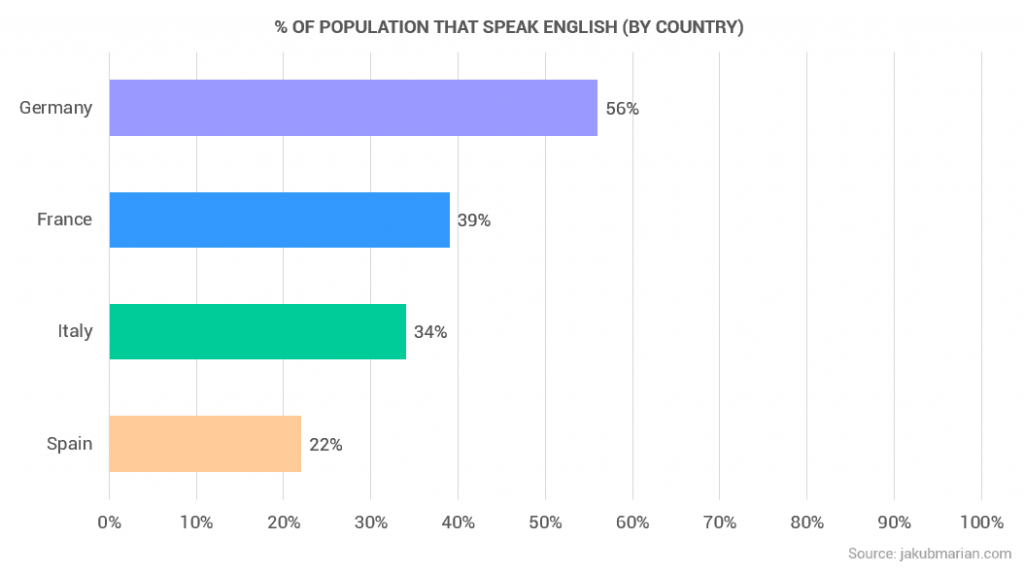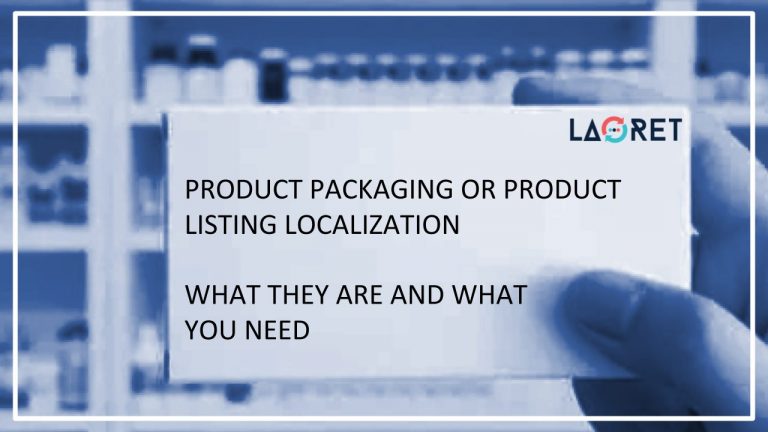Product Packaging or Product Listing Localization: What They Are And What You Need
So, you have a new product that you wish to launch in new language(s) or locale(s), and you are just about to contact a Language Service Provider (LSP) to sort that out for you. Great! But hang on. Are you looking for product packaging localization? Product listing localization? Both? (most likely both!) Then there are some things you should know.
Read on and discover the best practices for both services and, how they are ideally executed, and, most importantly, what is expected of you!
Product Packaging Localization
Pre-Production: What To Do Before You Localize
Before you can contact your LSP (Language Service Provider) and request service for Product Packaging Localization, there are some steps you should take in terms of legislation. Let us give you a rundown of what these are!
Labeling Legislation
Each country will have its own set of rules on what has to be presented on the label and in what way it should legally be presented. Once you have selected the countries and regions you intend to target, make sure that you are aware of what these rules are.
For example, cosmetics have undergone quite a revolution within the European Union (EU). People are becoming more and more aware of what is inside a product and will make their purchases accordingly. The laws of the EU are equally strict and demand that cosmetics come with a label that includes any warnings that may be needed, its function, and an extensive list of ingredients. And this applies to each country.
Ingredients and component legislation
Speaking of ingredients, more than just needing to put the ingredients on the label, you should also do your research on which ingredients are actually allowed to appear in the product itself. Perhaps your product will not be allowed in specific countries due to the illegality of certain ingredients, or, perhaps you will need to alter your product to fit a certain market.
Let’s take the ever-strict EU as an example again. The EU is committed to high standards in its products and has a long list of banned chemicals. This applies to cosmetics and medicine, but even more so for food and drink.
Marketing legislation
Marketing is also undergoing something of a revolution. While marketing is intended to present a product’s best features according to local cultures, there are many countries where it is illegal to make invalid claims or even to imply that your product will provide greater benefits than they actually do.
For example, in the UK and the EU, you cannot use the word “natural†loosely. If your product is natural, you will need scientific proof that backs this up.
Legislations In Order? Don’t Forget To Decide On Your Goals
Next to making sure you are all set to fulfill your target locale’s legal requirements, make sure you understand the scope of your project and develop strategies that will help you gain perspective and clarity, and also share more targeted information with your LSP.
- First things first, what are you trying to achieve in your target market? Are you trying to sell? Create brand awareness? In order to fully meet your and your audience’s expectations, you should conduct market research and enlist the help of local experts in determining sales goals.
- Similarly, make sure you get a good idea of what your competitors are up to. Have they made any mistakes you should be avoiding? What exactly is working for them? What is not?
- Determine which languages you will be translating your product into and how many would actually be feasible for you to achieve within your budget and timeline. Remember what we said, you might not only need to mention certain things on the label, you may also need to change your product to fit local standards.
The Ideal Product Packaging Localization Process
Commit to 100% Human Translation By Industry Specialists
You may have guessed that with all those rules and legislation, you can’t simply run your translation through a Machine Translation Engine. They should be performed by native, in-country industry experts with years of experience in the field your product is designed for. Specialist knowledge is especially useful when it comes to industries demanding precision such as the medical and pharmaceutical fields.
What’s more, from a marketing standpoint, you will also need to put your trust in the hands of native marketing experts with local knowledge. Think about your product name, your slogan, and what kind of campaign you may want to use to launch your product in your new market.
This is where you go beyond translation, and enter the realm of localization, where your product’s content but also colors, diagrams and other images, dates and prices will be analyzed from the local perspective.
In fact, you can choose either Product Packaging Localization or Transcreation services. Transcreation is localization with the added spice of a “creative reimagining†of your product. This means you will develop content not only geared towards interests and buyer stages but also locales, which adds that extra punch of cultural potency that can strengthen the trust between you and your potential customer.
Pro Tip! Hang on! Transcreation or Localization? Which way to go? Learn the difference in our blog on when you should go for transcreation services, and when you should not.

Get A Culture-Savvy Design With Desktop Publishing (DTP) Experts
So, we have been talking so much about language, but what about the actual package itself? Here too, a specialized translation team, more specifically a translator who meets a graphic designer, will set the task of making your package culturally relevant. This is the job of DTP-Experts. Their job lies in creating a visually adapted product that specifically focuses on:
- Using the correct font for the correct language. There is no universal font that works for all languages! Visually, some are better than others.
- Speaking of languages, Right-to-Left (RTL) languages such as Arabic will need to be presented in a perfectly mirrored version of your package. This means that the entire layout will need to be adjusted for RTL readers.
- Another fun fact about languages is that depending on the language pair, the text can significantly expand or contract. For example, translations from German to English can expand up to 30 percent. DTP-Experts will work on making this extra bit of text space fit nicely into your design. This is why, to make the process run more efficiently, you should consider designing your packaging with text expansion in mind.
Product Listing & Description Localization
If You Have Your Own eCommerce Platform
Let’s think about the value of a Product Listing. Well-crafted Product Listing & Descriptions provide the product’s unique features and benefits and declare why this product is the indispensable problem solver people are looking for. So naturally, these descriptions must show brand authority and subject-specific knowledge.
So, you can’t simply treat them as an afterthought and focus only on everything related to your physical product and forget about how it would appear online for your multilingual audiences. Here is what to keep in mind!
- The content should be translated with all the relevant terminology geared towards your target audience. This is why human translations by native experts will get you the best results!
- Make sure your LSP will advise you on the correct tools to use when it comes to easily and continuously exporting your product descriptions for translation and importing them back into your Content Management System (CMS).
- The product descriptions will also need to be optimized for local search engines and your keywords will need to be localized following International SEO best practices. Learn more about this in our blog on how to manage international SEO and keyword localization.
- If you are looking to translate large catalogs but are not prepared budget-wise, consider offering a smaller selection for your target regions to start with. Make sure you determine which product will work best where!
If You Don’t Have Your Own Platform But Want Listings To Publish On The Online Marketplace
So, you want a listing of your product on the world’s most famous marketplace, Amazon. Easy! Almost everyone using Amazon speaks English, right? Not quite.
Have a look at the graph below. This list includes some of the biggest markets in Europe, along with the percentage of Amazon users who actually speak English. That’s right, even translating for the German market will make you connect with 44 percent of an otherwise lost clientele!

So even for the online marketplaces, you will need to localize your content in order to reach your product’s full potential.
But, first things first. Before you can get a quality translation, you will need a quality listing in your source language. Make sure your listing is optimized according to the guidelines offered by the platform.1 Make sure you follow these guidelines to the letter, since they are designed with their average user in mind.
Localization Tips For Multilingual Product Listing
Much like with the product descriptions for eCommerce platforms, the listing posted on Amazon or other marketplaces, rely on high-quality translation. Interestingly, Amazon does offer its own translation tools to help international sellers prepare for the European market. But by their own sellers’ admittance, there is nothing like the intuition of the human translator to connect with foreign markets.2 So, this is our recommendation as well. Commit to human translation and keyword localization by native, experienced linguists. Here are some specifics!
- Keyword localization for marketplaces is all about finding those keywords with buyer intent. Remember, your users are not looking for information, they are looking for your product! So, make sure these are the kinds of keywords you provide your LSP with.
- After about 2 weeks, run an automatic PPC campaign and see which keywords are performing well. Adjust your strategy accordingly.
- The linguists qualified to translate your keywords and your product listing, will have a sound grasp of the terminology used in your industry and has the native knowledge to find equally effective equivalents in the source language.

Conclusion
While product packaging localization requires quite a lot of input from your end before you can successfully have your package localized, it does have one crucial thing in common with product listing localization: human translation. Each service requires the highest level of accuracy if you wish to establish a bond with your target locale.
At Laoret, we hire only native, in-country experts with a strong background in the subject matter who know how to follow legal procedures and local customs to the letter. Our DTP-Experts are trained in creating a visually potent reproduction of your product in a way that is bound to resonate with your target locales.






